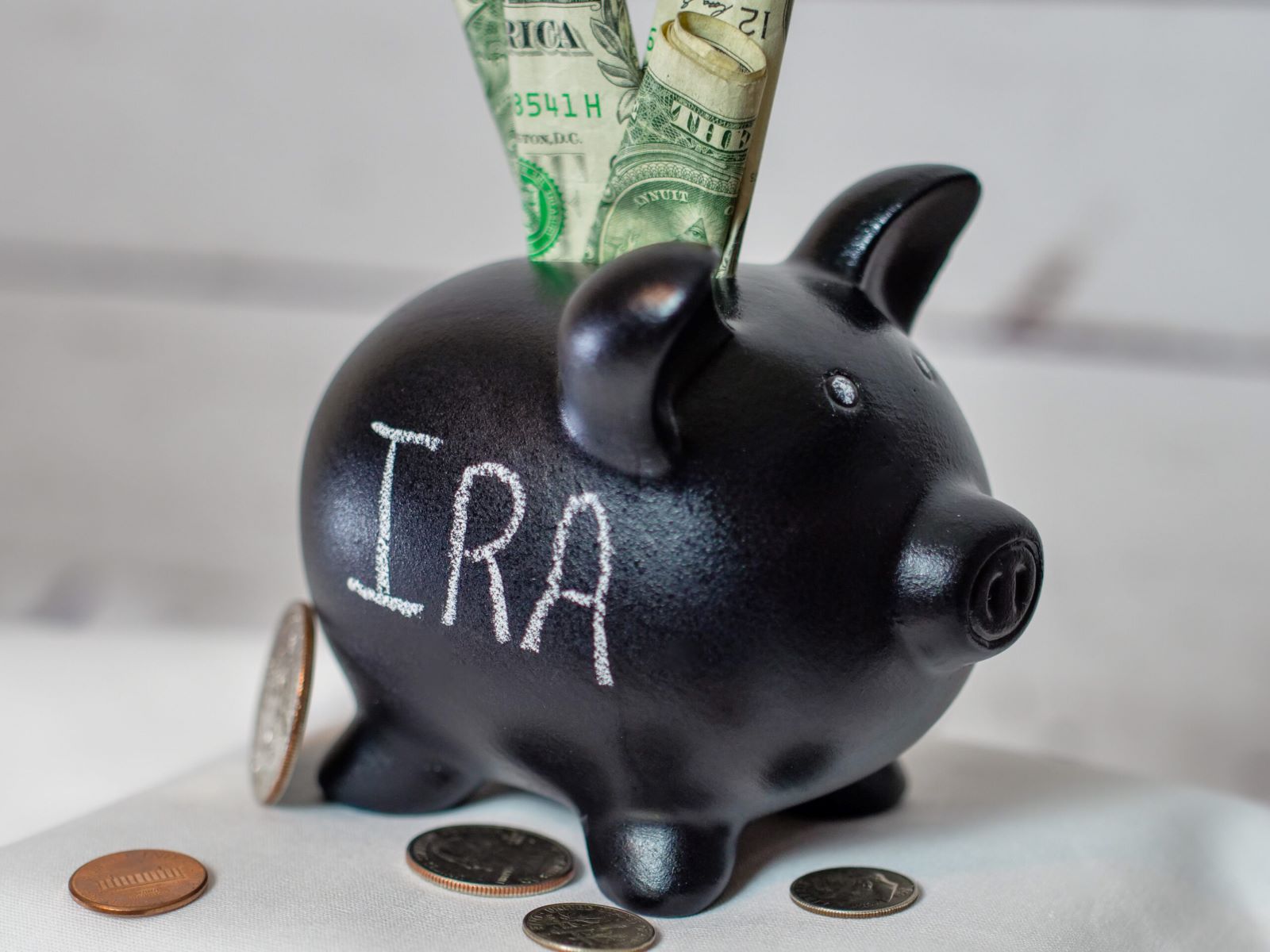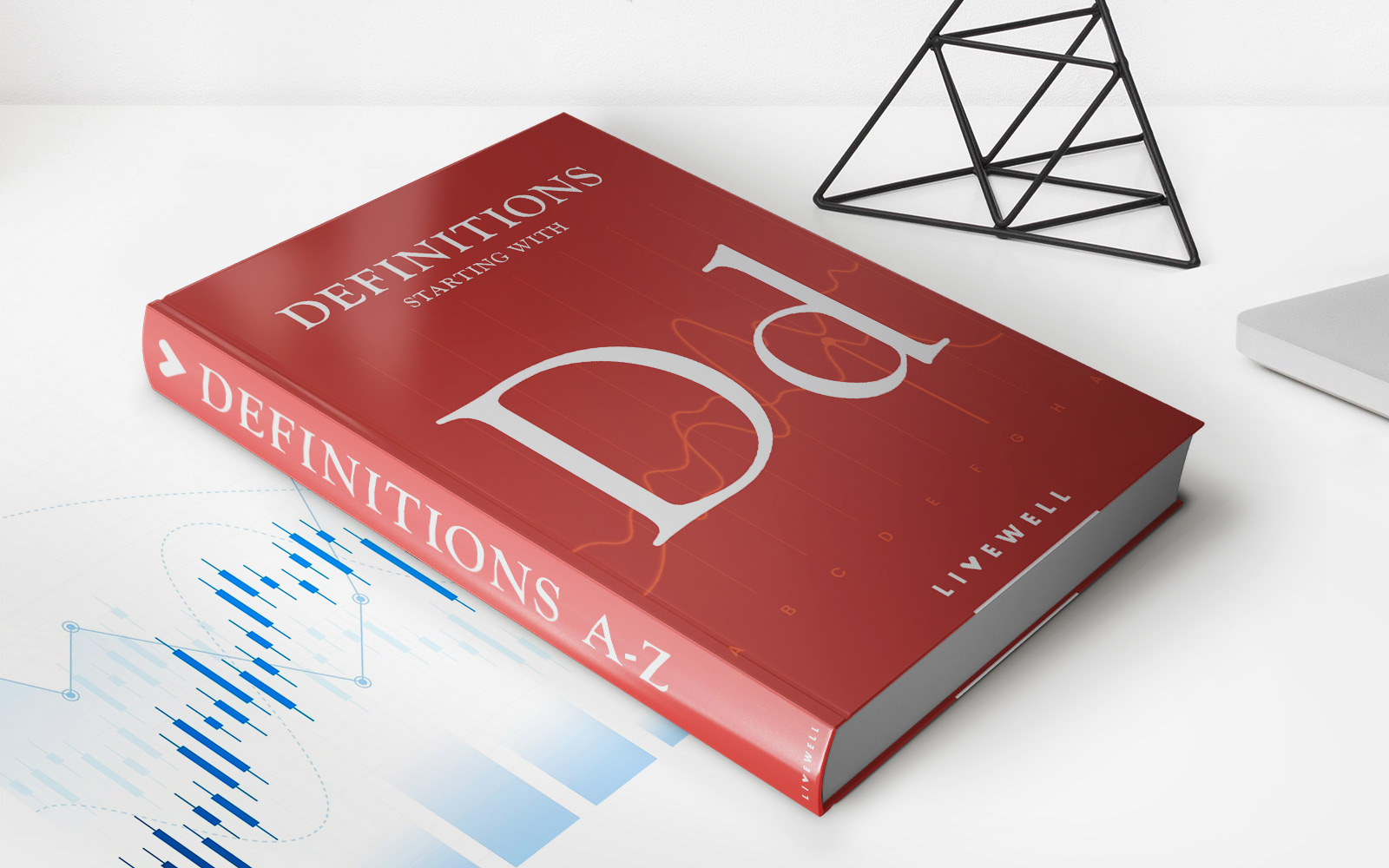

Finance
How To Roll A 401K Into A Self Directed IRA
Modified: February 21, 2024
Learn how to roll over your 401K into a self-directed IRA and take control of your finances. Maximize your investment potential with our step-by-step guide.
(Many of the links in this article redirect to a specific reviewed product. Your purchase of these products through affiliate links helps to generate commission for LiveWell, at no extra cost. Learn more)
Table of Contents
- Introduction
- Understanding 401K and Self Directed IRA
- Benefits of Rolling a 401K into a Self Directed IRA
- Eligibility and Requirements
- Steps to Roll a 401K into a Self Directed IRA
- Considerations before Rolling Over
- Potential Risks and Pitfalls
- Investment Options in a Self Directed IRA
- Tax Implications of Rolling Over a 401K
- Differences between Traditional and Roth IRAs
- Conclusion
Introduction
Welcome to the world of retirement planning and investment! The decision to save for your future is a wise one, and ensuring that your funds are in the right place can make a significant difference in your long-term financial well-being. One popular option for retirement savings is a 401K, a tax-advantaged account offered by employers, and a self-directed Individual Retirement Account (IRA).
A 401K allows employees to contribute a portion of their salary towards retirement and enjoy tax benefits on their contributions. However, when you leave your job or retire, you might be wondering what to do with your 401K. In such cases, rolling your 401K into a self-directed IRA can be a smart move.
A self-directed IRA gives you more control and flexibility over your retirement investments. Rather than being limited to the investment options provided by your employer’s 401K plan, a self-directed IRA allows you to choose from a broader range of investment opportunities, such as real estate, precious metals, private equity, and more.
In this article, we will explore the process of rolling a 401K into a self-directed IRA. We will discuss the benefits, eligibility requirements, steps to take, and important considerations before making such a move. Additionally, we will delve into the potential risks and pitfalls to be aware of, discuss the various investment options available in a self-directed IRA, and touch on the tax implications of rolling over a 401K.
By the end of this article, you will have a comprehensive understanding of how to roll a 401K into a self-directed IRA and the potential benefits and implications of doing so. Let’s get started on this insightful journey to optimize your retirement savings and investment opportunities!
Understanding 401K and Self Directed IRA
Before diving into the details of rolling a 401K into a self-directed IRA, it’s important to have a clear understanding of these two retirement savings vehicles.
401K
A 401K is a retirement savings account offered by employers as part of their employee benefits package. It allows employees to contribute a portion of their pre-tax salary towards their retirement savings. Often, employers will match a percentage of the employee’s contributions, providing an additional incentive to save. The contributions to a 401K grow tax-deferred, meaning you don’t pay taxes on the funds until you withdraw them during retirement.
One of the advantages of a 401K is the higher contribution limit compared to an IRA. In 2021, the maximum annual contribution limit for a 401K is $19,500 for individuals under 50 years of age, and $26,000 for individuals who are 50 or older. Additionally, contributions to a 401K are deducted directly from your paycheck, making it a convenient and automated way to save for retirement.
Self Directed IRA
A self-directed IRA is an individual retirement account that allows you to have greater control over your investment choices. Unlike traditional IRAs, self-directed IRAs offer a wider range of investment options beyond stocks, bonds, and mutual funds. With a self-directed IRA, you have the flexibility to invest in non-traditional assets such as real estate, precious metals, private equity, lending, and more.
It’s important to note that a self-directed IRA still enjoys the same tax advantages as traditional IRAs. Contributions to a traditional self-directed IRA are typically tax-deductible, meaning you can reduce your taxable income for the year by contributing to the account. The funds within the self-directed IRA grow tax-deferred until you make withdrawals in retirement, at which point they are subject to income tax.
Now that we have a basic understanding of 401Ks and self-directed IRAs, let’s explore the benefits of rolling a 401K into a self-directed IRA and the eligibility requirements to do so.
Benefits of Rolling a 401K into a Self Directed IRA
Rolling a 401K into a self-directed IRA can offer numerous advantages for individuals looking to have more control over their retirement savings and investment choices. Here are some of the key benefits:
1. Expanded Investment Options
One of the primary advantages of a self-directed IRA is the broader range of investment options available. While a 401K typically limits your investment choices to a selection of mutual funds and company stocks, a self-directed IRA allows you to explore alternative investments such as real estate, private equity, precious metals, and more. This expanded menu of investments provides the opportunity for potentially higher returns and can help diversify your portfolio.
2. Greater Control and Flexibility
With a self-directed IRA, you have more control over your investment decisions. You can choose which assets to invest in, timing your investments to take advantage of market conditions, and make adjustments as needed. This flexibility can be appealing for individuals who want to have a more hands-on approach to their retirement savings and adapt their investments to their personal risk tolerance and financial goals.
3. Potential for Higher Returns
By diversifying your investment portfolio through a self-directed IRA, you have the opportunity to potentially earn higher returns compared to a traditional 401K. Alternative investments such as real estate or private equity can offer attractive appreciation potential and income streams. However, it’s important to note that these investments also come with their own set of risks, and it’s crucial to thoroughly research and understand each investment opportunity before committing funds.
4. Consolidation of Retirement Accounts
If you have multiple retirement accounts from previous employers, rolling them into a self-directed IRA can simplify your financial life. By consolidating your retirement funds into one account, you can better track and manage your investments, reduce administrative fees, and potentially improve the overall performance of your portfolio through strategic asset allocation.
5. Continuation of Tax Benefits
When you roll your 401K into a self-directed IRA, you maintain the tax advantages of the original account. Contributions to a traditional self-directed IRA are typically tax-deductible, reducing your taxable income for the year. Additionally, the funds within the self-directed IRA grow tax-deferred until you make withdrawals in retirement, at which point they are subject to income tax. This tax-deferral can provide a significant advantage in growing your retirement savings over time.
Now that we’ve explored the benefits of rolling a 401K into a self-directed IRA, let’s move on to the eligibility requirements and steps involved in the rollover process.
Eligibility and Requirements
Before rolling a 401K into a self-directed IRA, it’s important to understand the eligibility requirements and certain factors to consider. Here are the key points to keep in mind:
1. Employment Status
In most cases, you can only rollover a 401K into a self-directed IRA when you leave your job or retire. If you are still actively employed with the company that sponsors the 401K, you may need to check with your employer to determine whether they allow in-service withdrawals or rollovers while still employed.
2. Vesting Period
Vesting refers to the process by which you earn ownership of the contributions made by your employer to your 401K account. Some employers have a vesting schedule that indicates how long you must be employed before you are fully vested in their matching contributions. Make sure you understand your vesting status before deciding to roll over your 401K, as you may forfeit any non-vested employer contributions if you leave your job before becoming fully vested.
3. Qualified Retirement Plan
Not all retirement plans are eligible for rollover into a self-directed IRA. To be eligible, your 401K must be a qualified retirement plan, which means it meets certain requirements set by the Internal Revenue Service (IRS). Most employer-sponsored 401K plans typically meet these requirements, but it’s essential to confirm the status of your plan before proceeding with a rollover.
4. IRS Rollover Rules
The IRS has strict rules regarding the rollover of retirement funds to ensure that the funds remain tax-advantaged. According to IRS guidelines, you must complete the rollover process within 60 days of receiving the distribution from your 401K. Failure to do so may result in taxes and penalties on the withdrawal. To avoid this, it is generally recommended to opt for a direct rollover, also known as a trustee-to-trustee transfer, where the funds are transferred directly from your 401K plan to the self-directed IRA provider.
5. Documentation and Paperwork
When initiating a rollover, you will need to complete certain paperwork provided by your self-directed IRA provider. This typically includes a rollover request form and any supporting documents requested by the provider. Make sure to carefully review and fill out the paperwork to ensure a smooth transition of funds.
It’s important to consult with a financial advisor or tax professional to fully understand the eligibility requirements and any specific considerations based on your individual circumstances. They can provide personalized guidance and ensure compliance with IRS rules and regulations.
Now that we have covered the eligibility requirements and considerations, let’s move on to the steps involved in rolling a 401K into a self-directed IRA.
Steps to Roll a 401K into a Self Directed IRA
Rolling a 401K into a self-directed IRA involves a series of steps to ensure a seamless transfer of funds. Here is a general outline of the process:
1. Research Self Directed IRA Providers
Start by researching and selecting a reputable self-directed IRA provider that aligns with your investment goals and offers the investment options you desire. Consider factors such as fees, customer service, investment expertise, and online tools provided by the provider. It’s important to choose a provider that offers the necessary support and guidance for managing your self-directed IRA.
2. Open a Self Directed IRA Account
Once you have chosen a self-directed IRA provider, you will need to open an account with them. This typically involves completing the account application form and providing any necessary documentation, such as identification and proof of address. The provider will guide you through the process and may require you to transfer a minimum initial investment to open the account.
3. Request and Review 401K Distribution Options
Contact your employer’s 401K plan administrator to request the necessary paperwork for initiating a rollover. They will provide you with options for taking a distribution from your 401K. You may have the choice to receive a check made payable to your self-directed IRA provider or have the funds directly transferred from your 401K to the self-directed IRA provider through a trustee-to-trustee transfer.
4. Complete Rollover Request Form
Fill out the necessary rollover request form provided by your self-directed IRA provider. This form will specify the details of the rollover, including the amount to be transferred and the account information of the self-directed IRA. Ensure that you review and accurately complete the form, as any errors may result in delays or potential tax consequences.
5. Submit Rollover Request Form to 401K Plan Administrator
Submit the completed rollover request form to your employer’s 401K plan administrator as per their instructions. Be sure to follow their specific procedures and deadlines to initiate the rollover process smoothly. Alternatively, if you have chosen a direct rollover, inform the plan administrator to transfer the funds directly to your self-directed IRA provider.
6. Monitor and Confirm Rollover Completion
Keep track of the rollover process and monitor the progress of your 401K funds being transferred to your self-directed IRA. Once the transfer is complete, it is essential to confirm with both the 401K plan administrator and the self-directed IRA provider that the funds have been successfully deposited into your self-directed IRA account. Retain any documentation and confirmation for future reference and tax purposes.
It’s worth noting that the specific steps and procedures may vary depending on your individual circumstances and the requirements of your 401K plan and self-directed IRA provider. Consulting with a financial advisor or tax professional can provide personalized guidance throughout the rollover process.
Now that we have covered the steps involved, let’s explore some important considerations to keep in mind before rolling over a 401K into a self-directed IRA.
Considerations before Rolling Over
Before proceeding with the rollover of your 401K into a self-directed IRA, there are several important considerations to keep in mind. These factors can impact your decision and ensure a smooth transition of funds. Here are some key considerations:
1. Investment Knowledge and Expertise
A self-directed IRA provides a broader range of investment options compared to a traditional 401K. However, with greater control comes the need for investment knowledge and expertise. Before rolling over your 401K, consider whether you have the necessary knowledge and comfort level with alternative investments. It may be prudent to consult with a financial advisor or investment professional who can provide guidance based on your investment goals and risk tolerance.
2. Administrative Responsibilities
Managing a self-directed IRA requires active involvement on your part. Unlike a 401K, where the employer typically handles administrative tasks, a self-directed IRA puts the responsibility on you to make investment decisions, conduct due diligence, and manage your portfolio. Assess your ability and willingness to take on these administrative responsibilities before deciding to roll over your 401K.
3. Fees and Expenses
It’s essential to understand the fees and expenses associated with a self-directed IRA. Different providers may have varying fee structures and account maintenance costs. Consider factors such as account opening fees, annual maintenance fees, transaction fees, and any additional charges for specialized investment options. Carefully review and compare the fee schedules of different self-directed IRA providers to ensure you choose one that aligns with your investment strategy and financial goals.
4. Level of Risk
Alternative investments, such as real estate or private equity, can carry a higher level of risk compared to traditional investment options like stocks and bonds. Assess your risk tolerance and investment objectives to determine whether a self-directed IRA’s potential rewards outweigh the increased risk. Diversification is key to managing risk, so consider how you would allocate your investments in a self-directed IRA to maintain a balanced and diversified portfolio.
5. Financial Goals and Time Horizon
Consider your financial goals and investment time horizon before rolling over your 401K. Evaluate whether a self-directed IRA aligns with your long-term retirement plans and objectives. If your retirement is imminent, it may be prudent to carefully assess the risks and potential rewards of alternative investments compared to more conventional options.
By considering these factors, you can make an informed decision regarding the rollover of your 401K into a self-directed IRA. It’s always beneficial to consult with a financial advisor or retirement planning professional who can provide personalized guidance based on your specific circumstances and financial goals.
Now, let’s discuss some potential risks and pitfalls to be aware of when rolling over a 401K into a self-directed IRA.
Potential Risks and Pitfalls
While rolling over a 401K into a self-directed IRA can offer numerous benefits, it is important to be aware of the potential risks and pitfalls involved. Understanding these risks can help you make informed decisions and mitigate any potential downsides. Here are some key points to consider:
1. Lack of Diversification
Investing in alternative assets through a self-directed IRA may limit diversification compared to a traditional 401K. Depending on your investment choices, your portfolio could become more concentrated in a specific asset class or industry. A lack of diversification may expose you to increased risk if the chosen investments underperform or face market volatility. It is important to carefully assess and diversify your portfolio to manage risk effectively.
2. Limited Liquidity
Certain alternative investments in a self-directed IRA, such as real estate or private equity, may lack liquidity compared to publicly traded securities like stocks and bonds. It may be challenging to sell or access funds quickly in case of an emergency or unanticipated expenses. Consider your liquidity needs before committing a significant portion of your retirement savings to illiquid assets.
3. Higher Complexity and Due Diligence
Investing in alternative assets requires a higher level of complexity and due diligence compared to traditional investment options. Understanding the intricacies of real estate transactions, private equity investments, or other alternative assets may involve additional research, knowledge, and expertise. Failing to adequately evaluate investment opportunities may result in poor investment decisions and potential financial losses.
4. Potential for Higher Fees
While a self-directed IRA can offer more investment options, it may also come with higher fees compared to a traditional 401K plan. Each transaction or investment made within the self-directed IRA may incur additional fees, including account maintenance fees, transaction fees, custodial fees, and specialized investment fees. It is important to carefully review the fee structure of your self-directed IRA provider and assess the impact on your overall investment returns.
5. Regulatory Compliance
Investing in alternative assets through a self-directed IRA may have additional regulatory compliance requirements. Certain investments may have specific rules and regulations that you must adhere to, such as prohibited transactions or IRS guidelines. Failure to comply with these regulations may result in penalties or disqualification of the IRA’s tax-advantaged status. It is crucial to stay informed about the rules governing your chosen investments and consult with a tax professional when needed.
While the potential risks and pitfalls exist, they can be mitigated with proper planning, due diligence, and professional guidance. By understanding and addressing these risks, you can make well-informed investment decisions within your self-directed IRA.
Now, let’s explore the various investment options available within a self-directed IRA.
Investment Options in a Self Directed IRA
One of the primary advantages of a self-directed IRA is the expanded range of investment options it offers. Unlike traditional retirement accounts like 401Ks, self-directed IRAs allow you to invest in a wider variety of assets. Here are some popular investment options available within a self-directed IRA:
1. Real Estate
Investing in real estate through a self-directed IRA can be an attractive option. You can purchase residential or commercial properties, rental properties, land, and even invest in real estate investment trusts (REITs). Real estate can provide potential rental income, capital appreciation, and tax advantages like depreciation deductions.
2. Private Equity
Investing in private companies or startups through a self-directed IRA is another option. This can include equity investments, angel investments, or venture capital funds. Private equity investments have the potential for high returns but also carry significant risks, so thorough due diligence is crucial before making any investments.
3. Precious Metals
Self-directed IRAs allow you to invest in physical precious metals such as gold, silver, platinum, or palladium. Precious metals can provide a hedge against inflation and economic uncertainty. They can be held either directly or through a custodian in specialized accounts known as precious metals IRAs.
4. Promissory Notes and Lending
Self-directed IRAs also offer the option to invest through promissory notes or private lending. This can involve making loans to individuals, businesses, or real estate projects, earning interest income on the loan. However, it’s important to carefully assess the creditworthiness of borrowers and understand the associated risks.
5. Tax Lien Certificates
A self-directed IRA can invest in tax lien certificates, which are liens placed on properties for unpaid property taxes. Investing in tax lien certificates can provide opportunities for high interest rates and potentially acquiring properties at a discounted price if the property owner fails to redeem the lien.
6. Stocks, Bonds, and Mutual Funds
While self-directed IRAs offer alternative investment options, they also allow you to invest in more traditional assets such as stocks, bonds, and mutual funds. You can still build a diversified portfolio by including a mix of traditional and alternative investments within your self-directed IRA.
It’s important to note that each investment option comes with its own risks, tax considerations, and complexities. Thorough research, due diligence, and possibly consulting with a financial advisor or investment professional can help you navigate these investment options and make informed decisions that align with your financial goals and risk tolerance.
Now, let’s explore the tax implications of rolling over a 401K into a self-directed IRA.
Tax Implications of Rolling Over a 401K
When considering a rollover from a 401K to a self-directed IRA, it is important to understand the tax implications involved. Here are the key tax considerations to keep in mind:
1. Traditional vs. Roth
The tax treatment of a 401K rollover depends on whether you have a traditional 401K or a Roth 401K. A traditional 401K is funded with pre-tax contributions, meaning contributions are made before taxes are deducted, while a Roth 401K is funded with after-tax contributions. Understanding the type of 401K you have will help determine how the rollover will be taxed.
2. Traditional 401K Rollover
If you have a traditional 401K and choose to roll it into a self-directed traditional IRA, the funds maintain their tax-deferred status. This means that you will not owe taxes on the rollover amount when it is transferred to the self-directed IRA. However, keep in mind that when you eventually withdraw funds from the self-directed traditional IRA in retirement, the withdrawals will be subject to income tax.
3. Roth 401K Rollover
If you have a Roth 401K and decide to roll it into a self-directed Roth IRA, the funds maintain their tax-free status. The rollover of Roth 401K funds into a self-directed Roth IRA is treated as a qualified rollover, and you will not owe taxes on the amount rolled over. Additionally, qualified withdrawals from the self-directed Roth IRA in retirement will be tax-free, as long as certain requirements are met.
4. Tax Reporting
When the rollover from a 401K to a self-directed IRA occurs, it is essential to properly report the transaction on your tax return. Generally, the rollover is not considered taxable income or a distribution, as long as the funds are transferred directly from the 401K to the self-directed IRA through a trustee-to-trustee transfer. Be sure to retain any necessary documentation, such as rollover documentation provided by the 401K plan administrator and the self-directed IRA provider, for tax reporting purposes.
5. Required Minimum Distributions (RMDs)
After reaching the age of 72 (or 70 ½ if you were born before July 1, 1949), traditional IRAs, including self-directed traditional IRAs, are subject to required minimum distributions (RMDs). This means that you must withdraw a certain amount each year, as determined by the IRS, from your self-directed traditional IRA and include it as taxable income on your tax return. Failure to take RMDs may result in penalties.
It is important to consult with a tax professional or financial advisor who can provide personalized guidance on the tax implications of rolling over a 401K into a self-directed IRA. They can help you understand the specific tax rules and regulations based on your individual circumstances, ensuring compliance with IRS guidelines.
Now, let’s move on to discussing the differences between traditional and Roth self-directed IRAs and their respective tax implications.
Differences between Traditional and Roth IRAs
When considering a self-directed IRA, it’s important to understand the differences between a traditional IRA and a Roth IRA. These two types of IRAs have distinct features and tax implications. Here are the key differences:
1. Tax Treatment
A traditional IRA offers tax-deferred growth, meaning contributions are made with pre-tax dollars and grow tax-deferred until withdrawals are made in retirement. Contributions to a traditional IRA may be tax-deductible, reducing your taxable income for the year. However, withdrawals from a traditional IRA in retirement are taxed as ordinary income.
On the other hand, a Roth IRA is funded with after-tax dollars, meaning contributions are made with income that has already been taxed. With a Roth IRA, contributions do not impact your current tax liability. The significant benefit of a Roth IRA is that qualified withdrawals in retirement are tax-free.
2. Income Restrictions
There are income limitations for contributing to a Roth IRA, whereas a traditional IRA has no income restrictions. In 2021, for those filing as single or head of household, the ability to contribute to a Roth IRA begins to phase out at $125,000 of modified adjusted gross income (MAGI) and is completely phased out at $140,000. For married couples filing jointly, the phase-out range is $198,000 to $208,000 of MAGI.
In contrast, individuals with earned income can contribute to a traditional IRA regardless of their income level. However, the deductibility of contributions to a traditional IRA may be limited if they or their spouse are covered by an employer-sponsored retirement plan.
3. Required Minimum Distributions (RMDs)
Traditional IRAs are subject to required minimum distributions (RMDs) when you reach the age of 72 (or 70 ½ if you were born before July 1, 1949). RMDs require you to start withdrawing a minimum amount from your traditional IRA each year, and these withdrawals are subject to income tax. The amount is based on your age and the account balance.
Roth IRAs, however, do not have RMD requirements during the lifetime of the original account holder. This allows for greater flexibility in managing your retirement savings and potentially passing on your Roth IRA to heirs in a tax-efficient manner.
4. Contribution Limits
The contribution limits for both traditional and Roth IRAs are the same. In 2021, the maximum annual contribution limit is $6,000 for individuals under 50 years of age, and an additional $1,000 catch-up contribution is allowed for individuals who are 50 or older.
5. Future Tax Rates
The choice between a traditional IRA and a Roth IRA involves considering your current and future tax situations. If you anticipate being in a higher tax bracket during retirement or believe that tax rates will increase in the future, a Roth IRA may be more advantageous. However, if you expect to be in a lower tax bracket during retirement, a traditional IRA may provide immediate tax benefits.
It’s important to carefully evaluate your personal circumstances, retirement goals, and financial projections to determine which type of self-directed IRA aligns best with your needs and objectives. Consulting with a financial advisor or tax professional can provide personalized guidance based on your individual situation.
Now that we’ve covered the differences between traditional and Roth IRAs, let’s wrap up our discussion.
Conclusion
In conclusion, rolling a 401K into a self-directed IRA can offer numerous benefits and opportunities for individuals looking to take control of their retirement savings and investment choices. With a self-directed IRA, you have the flexibility to diversify your investment portfolio and explore alternative assets such as real estate, private equity, precious metals, and more.
Before initiating a rollover, it is important to consider various factors such as your eligibility, investment knowledge, administrative responsibilities, fees, risk tolerance, and financial goals. Thorough research and consultation with professionals can help ensure a well-informed decision and a smooth rollover process.
Remember to carefully assess the potential risks and pitfalls associated with alternative investments and understand the tax implications of rolling over a 401K to a self-directed IRA. The type of IRA, whether traditional or Roth, will determine the tax treatment of contributions, withdrawals, and required minimum distributions.
By following the steps involved in rolling over a 401K, considering the available investment options, and understanding the tax implications, you can optimize your retirement savings and potentially achieve higher returns while maintaining control and flexibility over your investment decisions.
It is important to regularly monitor and review your self-directed IRA investments, reassessing your portfolio as your financial situation and investment goals evolve. Periodic consultation with financial advisors or investment professionals can provide valuable guidance in maximizing the potential of your self-directed IRA.
Taking charge of your retirement savings through a self-directed IRA can empower you to build a diversified portfolio tailored to your unique investment preferences and financial goals. With careful planning and strategic decision-making, your self-directed IRA can serve as a powerful tool for securing a comfortable and fulfilling retirement.
Now that you have a comprehensive understanding of how to roll a 401K into a self-directed IRA, it’s time to embark on your journey to optimize your retirement savings and investment opportunities. Best of luck in building a prosperous future!














